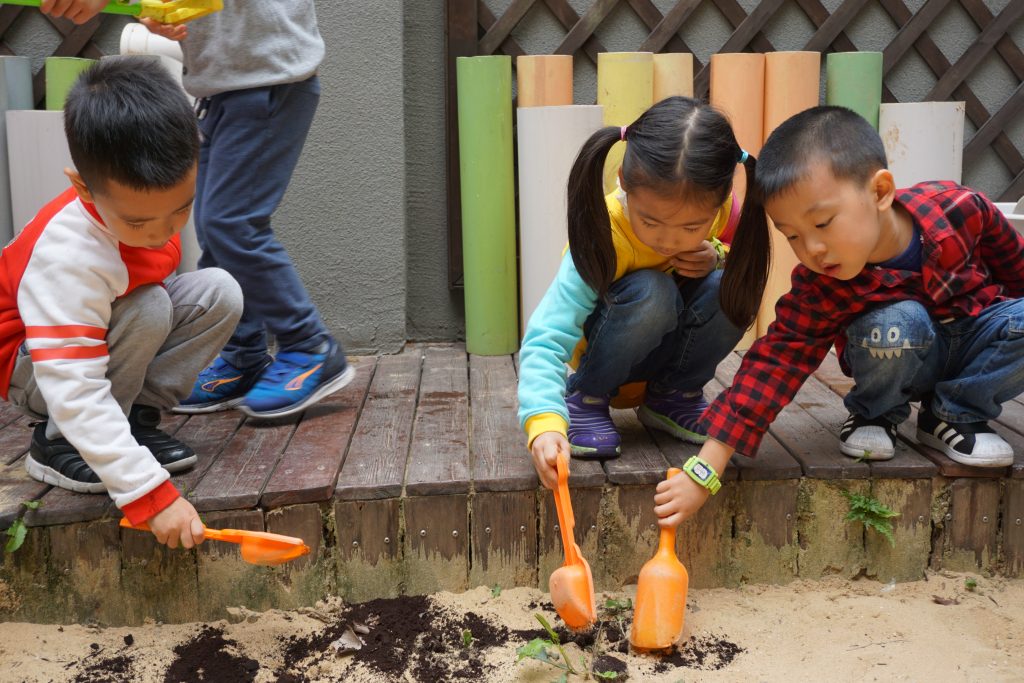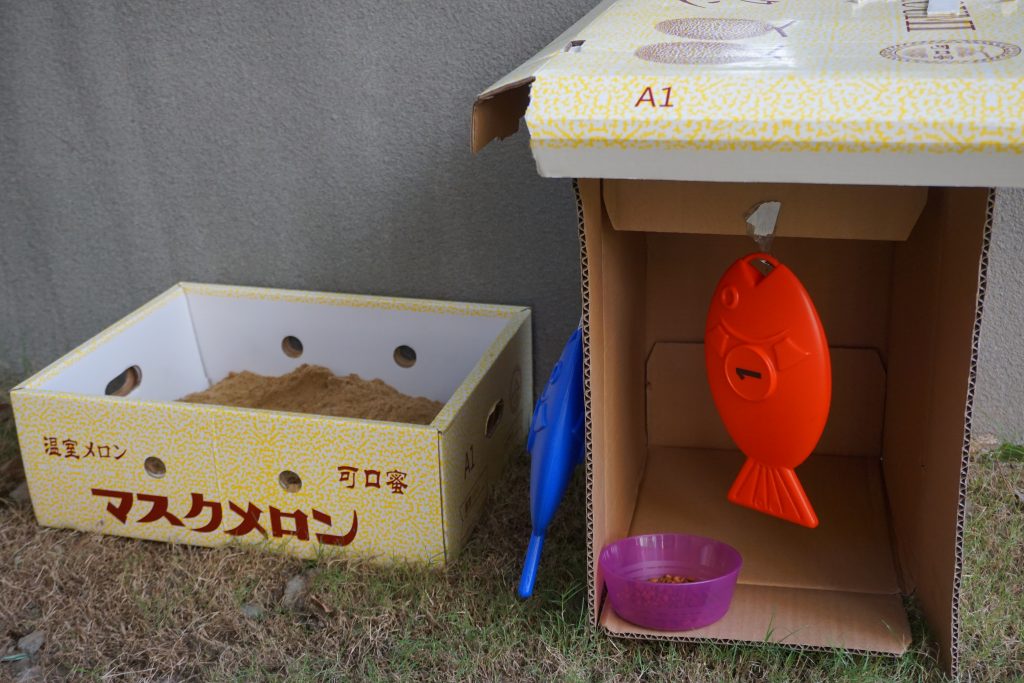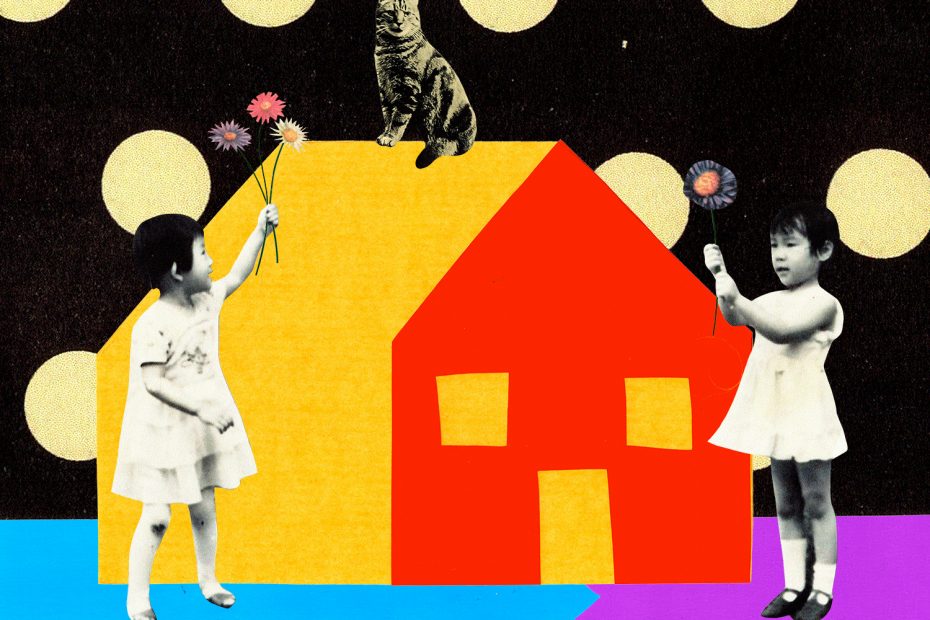By Zhou Jiang and Ting Zhang, translated by Qin Shu
Illustration by Ellen Dubreuil
Children in urban kindergartens lack opportunities to get close to nature. But with help from teachers, getting close to nature can still happen – as the following story illustrates. The story is about a kindergarten in the West Lake District, Hangzhou City, where poop in the sandpit inspired a class of 4–5-year-old children to explore their relationship with a cat.

“Go away, cat! – We are enemies!”
One day, in the Mingyuan kindergarten, the children were hunting “treasures” in the sandpit, but the hunting game stopped when the children found cat poop in the sandpit. In order to solve this problem and continue their game, the children began thinking of ways to get the cat to stay away: “Use pipes to encircle the sandpit, so the cat can’t get in!”; “Use a scarecrow to drive the cat away!”; “Cover the sandpit with a cloth.”They tried collecting materials and putting the plan into action. They tried using pipes of different thickness to encircle the sandpit. The pipes failed because the cat could still jump through the pipes and enter the sandpit. They covered the sandpit with a cloth, but the cat scratched his way through the cloth.
After that, I organized a discussion. I was surprised to find that during this “fight” with the cat, the children, had come to know the cat well. They had become familiar with the enemy! They realized that the cat had sharp claws which can easily rip cloth and that the cat is an animal which is capable of jumping and climbing. Although they failed in their fight to protect the sandpit, they gained valuable experience getting to know the cat.
“Cat left! — We win.”

With the frequent appearances of poop in the sandpit, the children began their second round of attempts to keep the cat away. This time they asked the adults, including the veterinarians, for help to find a way to prevent the cat from returning. At the same time, they collected information by paying attention to the things around them. In this period of problem solving, by reading a coffee advertisement, a girl found that coffee grounds can repel animals such as mosquitoes. So she and the other children began to collect all kinds of strong-smelling items such as air fresheners, grapefruit, and coffee grounds, and then they sprayed them around the sandpit. A few days later, they realized the cat had not returned. There was no cat poop in the sandpit!
“How is the cat? We miss you.”
After a few days and because there was no poop in the sandpit, everyone was sure that the cat wouldn’t come again. However the children began to worry about the cat: Does the cat have food to eat? Where does the cat poop now? Where does he live ? Will the cat be hurt? The children’s feelings for the cat changed because they were now worrying about the cat. So when they told a teacher that they wanted to build a little house for the cat, the teacher went along, and with the help of several teachers, they found suitable materials and built the little house. They hung fish on the. little house, filled the little house with toys and designed two slightly larger houses in case the cat was too big to live in the little house. But no cat appeared – which triggered more discussion among them. One teacher reminded them to remember that cats are very sensitive to smells and to where they poop. After realizing what the teacher was telling them, they built a big cat toilet in the house and filled it with the sand they knew the cat likes to poop in. Happily, in a very short time, they were surprised and excited to find cat poop appearing in the cat toilet. The cat had returned! And as a result of their problem solving, , the children had come to fully understand the significance of smell for the cat and also underand their desire to have a relationship with the cat.

“Cat Protector — We are friends.”
After the cat returned, the children showed desire and determination to protect the cat. They did many things for the cat, such as decorate the cat’s room with flowers, take turns cleaning up the cat’s toilet and so on. This change in the relationship between the children and the cat happened naturally. It helped the children think and act in obviously thoughtful and caring ways. Furthermore, the change in the children’s relationship with the cate came to suggest to the teachers something much larger and more significant, namely, how we can help children establish a deeper, more positive relationship with nature.

Author Bios
Zhou Jiang is a kindergarten teacher with 20 years’ experience in Mingyuan kindergarten in Xihu district, Hangzhou City.
Ting Zhang is a kindergarten teacher with 10 years’ experience in Mingyuan kindergarten in Xihu district, Hangzhou City.
*This article is translated by Qin Shu. Qin Shu is a kindergarten teacher with 7 years’ experience in Wenyushun kindergarten in Xihu district, Hangzhou City.

